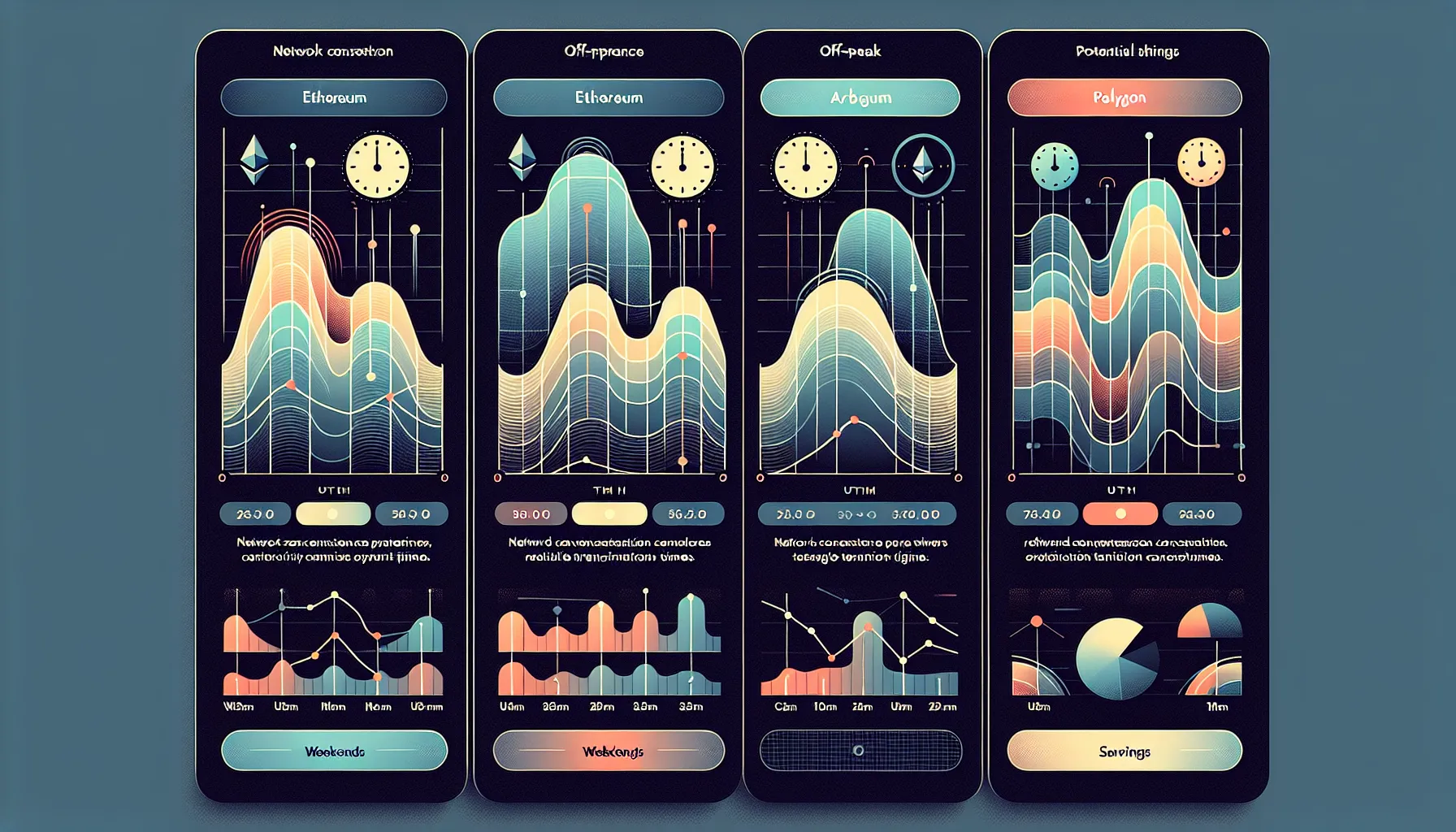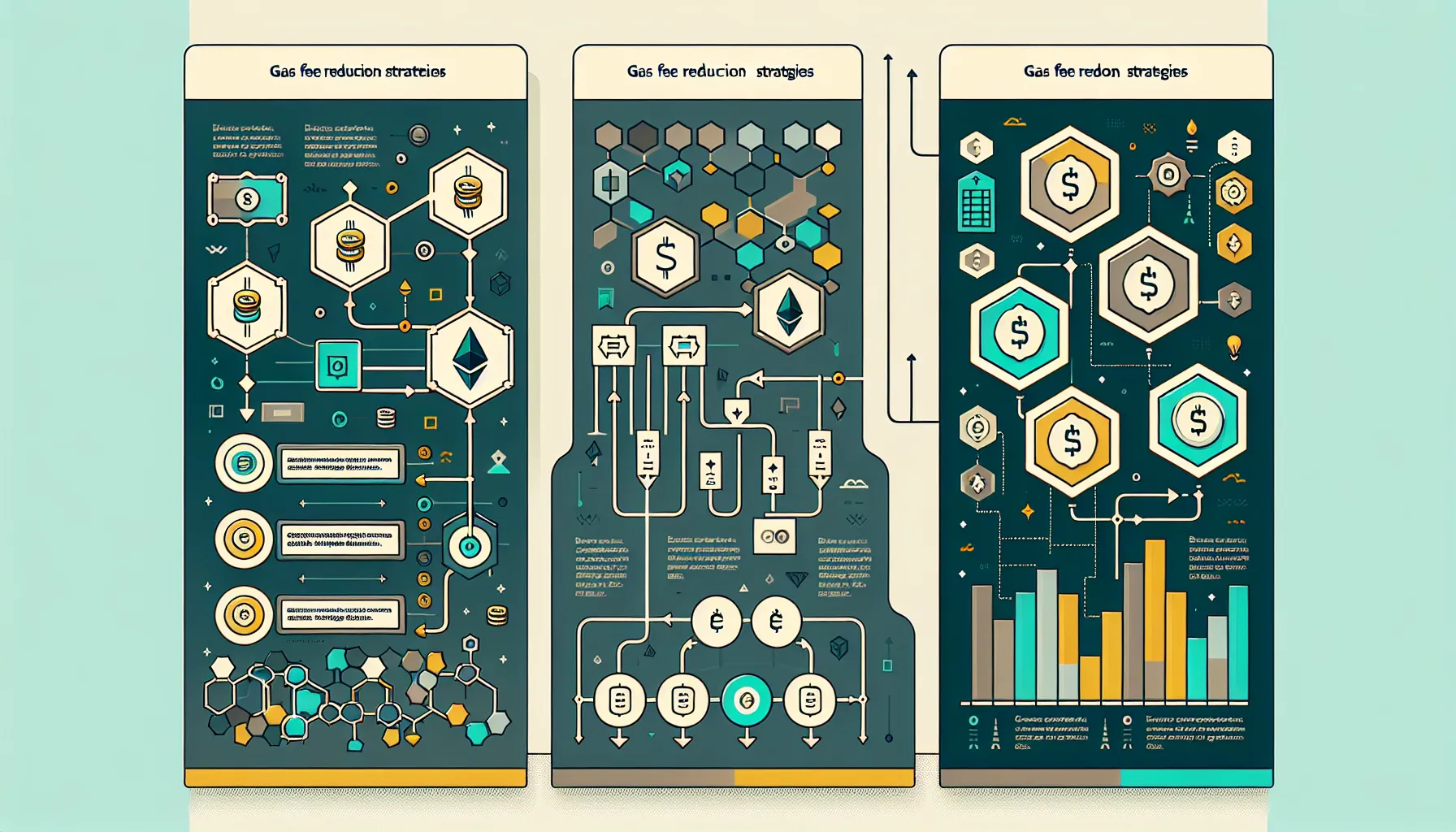Gas fees can quickly erode profits and deter users from interacting with blockchain networks. Whether you’re swapping tokens, minting NFTs, or engaging with decentralised finance (DeFi) protocols, transaction costs matter, especially on Ethereum, where fees can spike dramatically during periods of high demand. Fortunately, users now have access to multiple strategies and networks designed to minimise these costs without sacrificing security or decentralisation.
Ethereum remains the backbone of the blockchain ecosystem, but Layer 2 solutions like Arbitrum and sidechains such as Polygon have emerged as powerful alternatives, offering significantly reduced fees while maintaining interoperability with Ethereum’s robust infrastructure. By understanding how gas fees work and applying a combination of timing, technology, and smart transaction management, users can drastically cut costs across all three networks.
This guide presents 10 proven methods to lower your gas fees on Ethereum, Arbitrum, and Polygon. From timing transactions during off-peak hours to leveraging advanced wallet features and gas-optimised aggregators, these strategies will help both newcomers and experienced users transact more efficiently and economically.
Key Takeaways
- Timing transactions during off-peak hours on Ethereum, Arbitrum, and Polygon can reduce gas fees by 30–70% or more.
- Layer 2 solutions like Arbitrum offer fees 10–50 times lower than Ethereum mainnet whilst maintaining security and decentralisation.
- Polygon provides ultra-low gas fees, often just fractions of a penny, making it ideal for high-frequency activities like NFT minting and gaming.
- Using gas price trackers and setting custom gas limits gives precise control over transaction costs and prevents overpayment.
- DEX aggregators with gas optimisation, such as 1inch and ParaSwap, reduce both slippage and gas fees across all three networks.
- Batching multiple transactions together and enabling EIP-1559 features can significantly lower cumulative gas costs on Ethereum.
1. Time Your Transactions During Off-Peak Hours

Network congestion directly influences gas fees. When demand for block space is high, users compete by offering higher fees to miners or validators, driving prices up. Conversely, during quieter periods, competition decreases and fees drop substantially. Timing your transactions strategically can result in savings of 30–70% or more, depending on the network and time of day.
Understanding Network Congestion Patterns
Ethereum, Arbitrum, and Polygon each exhibit distinct congestion patterns influenced by their user bases and activity types. Ethereum tends to experience the highest traffic during weekdays, particularly between 12:00 and 20:00 UTC, when users in Europe and North America are most active. DeFi protocols, NFT launches, and token sales can cause sudden spikes in demand.
Arbitrum and Polygon generally mirror Ethereum’s patterns but with lower baseline fees. Polygon, being popular for gaming and microtransactions, may see increased activity during evenings in Asian and Western time zones. Arbitrum’s fee structure is more stable due to its rollup design, but it still benefits from off-peak timing.
Best Times to Transact on Each Network
For Ethereum, the most cost-effective periods are typically weekends, late nights (after 22:00 UTC), and early mornings (before 08:00 UTC). Saturday and Sunday consistently show lower average fees compared to weekdays.
Arbitrum fees remain low overall, but timing transactions during Ethereum’s off-peak hours can further reduce costs, as Arbitrum batches and settles transactions on Ethereum mainnet. Polygon users will find the lowest fees during similar windows, late-night and early-morning hours when global activity is minimal.
Monitoring historical gas price charts and setting transaction alerts can help identify optimal windows for your specific needs.
2. Use Gas Price Trackers and Estimators
Real-time gas price data is essential for making informed decisions about when to execute transactions. Gas trackers provide live feeds of current network conditions, historical trends, and predicted fee ranges, allowing users to wait for favourable conditions or adjust their urgency accordingly.
Top Tools for Monitoring Real-Time Gas Prices
Several reliable platforms offer gas price tracking across Ethereum, Arbitrum, and Polygon:
- Etherscan Gas Tracker: Provides real-time data on Ethereum gas prices, including low, average, and high priority fees. It also displays historical charts and estimates transaction costs in both Gwei and fiat currency.
- Gas Now: Offers a simple, colour-coded interface showing current gas prices and recommended fees for different transaction speeds (slow, standard, fast, instant).
- ETH Gas Station: A long-standing tool that delivers granular data on gas prices, transaction confirmation times, and network congestion levels.
- Polygon Gas Tracker: Available via PolygonScan, this tool provides equivalent functionality for the Polygon network, though fees are consistently low.
- Arbiscan: The block explorer for Arbitrum includes gas price data and network statistics, though Arbitrum’s fee model is less volatile than Ethereum’s.
Many wallets, including MetaMask and Rabby, integrate gas estimators directly into their transaction interfaces, offering convenience without needing to switch between tools. Using these trackers regularly helps users develop an intuition for typical fee ranges and identify anomalies or opportunities.
3. Set Custom Gas Limits and Priority Fees
Default gas settings in wallets are often conservative, leading to overpayment during low-congestion periods or stuck transactions during high demand. Learning to customise gas limits and priority fees gives users precise control over transaction costs and confirmation times.
How to Adjust Gas Settings in Your Wallet
In MetaMask and similar wallets, users can switch to Advanced Gas Controls to manually set three key parameters:
- Gas Limit: The maximum amount of computational work a transaction can consume. Most standard transfers require 21,000 gas, whilst smart contract interactions vary. Setting this too low will cause transaction failure: setting it too high wastes funds.
- Max Fee: The maximum price per unit of gas the user is willing to pay (measured in Gwei on Ethereum). This cap includes both the base fee and priority tip.
- Priority Fee (Tip): An additional amount paid to validators to incentivise faster inclusion in a block.
On EIP-1559 enabled networks (Ethereum and increasingly Arbitrum), the base fee is dynamically adjusted by the protocol and burned, whilst the priority fee goes directly to validators. Users should consult a gas tracker to determine current base fees, then add a small priority tip, often 1–2 Gwei during low congestion, or higher during peak times.
For Polygon, fees are so low that customisation is less critical, but the same principles apply. Always simulate or estimate transactions before committing to avoid costly mistakes.
4. Batch Multiple Transactions Together
Each blockchain transaction incurs a base cost, regardless of complexity. By combining multiple actions into a single transaction, users can significantly reduce cumulative fees, especially valuable on Ethereum, where even small transactions can be expensive.
Protocols and Wallets Supporting Batch Transactions
Several platforms and smart contracts enable batching:
- Gnosis Safe: A popular multi-signature wallet that allows users to queue and execute multiple transactions in one go, ideal for treasuries and DAOs.
- DeFi Saver: Automates and batches DeFi actions such as debt repayment, collateral adjustments, and liquidation protection.
- ParaSwap and 1inch: These DEX aggregators can bundle token approvals and swaps into a single transaction, reducing overhead.
- Custom Smart Contracts: Developers can write contracts that batch operations natively, such as distributing tokens to multiple recipients in one call.
Batching is particularly effective for recurring actions, such as weekly token distributions, multiple token approvals, or executing several swaps across different pools. On Arbitrum and Polygon, the savings are smaller in absolute terms but still meaningful for frequent users. Always verify that batching is supported by the dApp or wallet you’re using, and test with small amounts first.
5. Leverage Layer 2 Solutions Like Arbitrum
Layer 2 networks process transactions off Ethereum’s main chain, then bundle and settle them on-chain in batches. This approach dramatically reduces costs whilst preserving Ethereum’s security guarantees. Arbitrum is one of the most widely adopted Layer 2 solutions, offering a near-identical user experience to Ethereum but at a fraction of the cost.
Why Arbitrum Offers Significantly Lower Fees
Arbitrum uses optimistic rollup technology, which assumes transactions are valid by default and only computes fraud proofs if disputes arise. This allows thousands of transactions to be rolled up into a single Ethereum transaction, spreading the mainnet gas cost across many users.
As a result, fees on Arbitrum are typically 10–50 times lower than Ethereum mainnet, depending on network conditions. Complex DeFi interactions that might cost £20–50 on Ethereum can often be executed for under £1 on Arbitrum. Arbitrum also benefits from Ethereum’s security model, meaning users don’t sacrifice decentralisation or trust assumptions.
Bridging Assets to Arbitrum Efficiently
To use Arbitrum, users must first bridge assets from Ethereum. The official Arbitrum Bridge is the most secure option, though bridging itself incurs an Ethereum gas fee. To minimise costs:
- Bridge during off-peak hours when Ethereum fees are low.
- Bridge larger amounts less frequently, rather than making multiple small transfers.
- Consider using third-party bridges like Hop Protocol or Synapse, which may offer faster or cheaper routes depending on liquidity.
Once assets are on Arbitrum, users can transact freely with minimal fees. Many leading DeFi protocols, Uniswap, Aave, GMX, and others, are deployed on Arbitrum, providing a rich ecosystem without the mainnet cost burden.
6. Take Advantage of Polygon’s Ultra-Low Gas Costs
Polygon is a sidechain and Layer 2 scaling solution that offers some of the lowest transaction fees in the blockchain space, often just fractions of a penny. Whilst it sacrifices some decentralisation compared to Ethereum or Arbitrum, it remains highly secure and widely supported, making it an excellent choice for cost-conscious users.
Polygon’s consensus mechanism and architecture allow it to process transactions quickly and cheaply. Fees are paid in MATIC, Polygon’s native token, and are consistently low regardless of Ethereum’s congestion. This makes Polygon particularly attractive for high-frequency activities like NFT minting, gaming, microtransactions, and trading on decentralised exchanges.
Moving Assets to Polygon Network
Bridging assets to Polygon is straightforward. The official Polygon Bridge (also called the PoS Bridge) allows users to transfer ETH, ERC-20 tokens, and other assets from Ethereum to Polygon. The process requires an Ethereum transaction to deposit assets, which incurs a mainnet gas fee, but once on Polygon, fees become negligible.
Alternatively, third-party bridges such as Hop, Connext, or Across can help faster or cheaper transfers, especially when moving assets between Polygon and other Layer 2 networks. Some centralised exchanges also support direct withdrawals to Polygon, bypassing Ethereum entirely and saving on bridging costs.
Once on Polygon, users can access a thriving ecosystem including QuickSwap, SushiSwap, Aave, and Curve, all with minimal transaction fees. For users who prioritise cost over maximum decentralisation, Polygon offers an exceptional balance.
7. Use Gas Tokens and Rebate Programmes
Gas tokens and rebate programmes provide financial incentives for users to transact on specific platforms or during certain conditions. Whilst less common than other strategies, they can deliver meaningful savings for frequent traders and power users.
How Gas Tokens Work
Gas tokens like CHI (Chi Gas Token) and GST2 were designed to exploit Ethereum’s gas refund mechanism, allowing users to ‘store’ cheap gas during low-congestion periods and ‘spend’ it when fees are high. But, following Ethereum’s London upgrade and the implementation of EIP-1559, gas refunds were significantly reduced, making traditional gas tokens less effective.
Today, the concept has evolved into platform-specific rebate programmes. Some decentralised exchanges and DeFi protocols offer rebates or discounts to users who hold native governance tokens, stake assets, or achieve high trading volumes. For example:
- Certain DEXs provide fee discounts to token holders or liquidity providers.
- Trading platforms may offer cashback in the form of tokens after transactions are completed.
- Some protocols subsidise gas fees for early adopters or loyal users during promotional periods.
Whilst these programmes vary by platform and network, they’re worth investigating if you’re a regular user of a particular protocol. Always verify the legitimacy and sustainability of rebate schemes, and factor in token price volatility when assessing real savings.
8. Optimise Smart Contract Interactions
Smart contracts vary widely in complexity and efficiency. Poorly optimised contracts or unnecessary interactions can waste significant gas, especially on Ethereum. By understanding how contracts function and managing interactions carefully, users can reduce costs without sacrificing functionality.
Approve Token Allowances Strategically
Most DeFi platforms require users to approve a token allowance before the protocol can interact with it. This approval is a separate transaction that costs gas. Users often face a choice between approving an unlimited amount (requiring one approval per token, ever) or approving exact amounts (requiring repeated approvals).
Unlimited approvals save gas over time but carry security risks if a contract is exploited. Limited approvals are safer but more expensive. A middle-ground approach is to approve amounts sufficient for several transactions, reducing frequency without excessive exposure.
Some wallets and dApps now support gasless approvals via off-chain signatures (EIP-2612 and Permit functions), eliminating the need for an on-chain approval transaction altogether. Where available, this feature can save considerable gas.
Avoid Unnecessary Contract Calls
Every interaction with a smart contract consumes gas proportional to its complexity. Users should:
- Consolidate actions: Instead of making multiple small swaps or deposits, combine them into fewer, larger transactions.
- Use efficient contracts: Some protocols are better optimised than others. Research and choose platforms known for gas efficiency.
- Avoid redundant approvals: Check existing allowances before approving again.
- Limit trial transactions: Testing with tiny amounts may seem prudent, but repeated small transactions can cost more than one properly sized transaction.
On Arbitrum and Polygon, these optimisations matter less due to low baseline fees, but they remain valuable habits, especially when bridging back to Ethereum.
9. Choose DEX Aggregators With Gas Optimisation
Decentralised exchange (DEX) aggregators scan multiple liquidity sources to find the best trade execution and lowest fees. Advanced aggregators also optimise for gas costs, routing transactions through the most efficient paths and sometimes batching swaps to reduce overhead.
Recommended Aggregators for Each Network
1inch is one of the most sophisticated aggregators, operating on Ethereum, Arbitrum, and Polygon. It uses the Pathfinder algorithm to split trades across multiple DEXs and liquidity pools, minimising both slippage and gas costs. 1inch also offers a gas price estimator and allows users to set custom gas limits.
Matcha (by 0x) is another popular aggregator with gas optimisation features. It provides transparent fee breakdowns and sources liquidity from dozens of DEXs, making it ideal for users seeking the best possible rates with minimal gas expenditure.
ParaSwap supports multi-path routing and gas token integrations, and operates across Ethereum, Polygon, Arbitrum, and other networks. Its interface is user-friendly, and it highlights potential gas savings compared to direct DEX trading.
OpenOcean aggregates liquidity across centralised and decentralised exchanges, offering competitive rates and gas-efficient routing.
For Polygon-specific transactions, QuickSwap and SushiSwap are native DEXs with inherently low fees, though aggregators can still find better prices by splitting orders.
Using these aggregators not only improves trade execution but also reduces the cumulative gas cost of swapping tokens, particularly for larger or more complex trades.
10. Enable EIP-1559 Features in Your Wallet
EIP-1559, implemented on Ethereum in August 2021, fundamentally changed how gas fees are calculated and paid. Understanding and utilising its features can lead to more predictable costs and better transaction management. Arbitrum is progressively adopting EIP-1559 mechanics, and Polygon has its own fee market adjustments.
Understanding Base Fees and Priority Tips
Under EIP-1559, each transaction includes two components:
- Base Fee: A dynamic fee automatically adjusted by the network based on demand. When blocks are more than 50% full, the base fee increases: when they’re less full, it decreases. This fee is burned, removing ETH from circulation.
- Priority Fee (Tip): An optional amount paid directly to validators to incentivise faster inclusion. During low congestion, even a minimal tip (1–2 Gwei) is often sufficient.
Users set a Max Fee, which is the ceiling they’re willing to pay per unit of gas. The actual fee paid is the base fee plus the priority tip, up to the max fee. If the base fee is lower than the max fee, users automatically pay less and only the necessary amount.
This system offers greater transparency and predictability compared to the previous auction model. Users are less likely to overpay, and the network’s fee mechanism becomes more stable over time.
To enable EIP-1559 features in MetaMask or other wallets:
- Ensure your wallet software is up to date.
- Select ‘Advanced’ or ‘Edit’ gas options during transaction creation.
- Set the Max Fee based on current base fee data (check a gas tracker).
- Add a Priority Fee appropriate for your desired speed.
On Arbitrum, similar mechanics are being integrated, allowing users to benefit from more efficient fee markets. Polygon uses a modified fee structure but still allows manual adjustment of gas parameters for cost control.
Conclusion
Reducing gas fees across Ethereum, Arbitrum, and Polygon is not only possible but essential for anyone regularly interacting with blockchain networks. By combining timing strategies, real-time monitoring tools, wallet optimisations, and smart network selection, users can dramatically lower transaction costs without compromising security or functionality.
Ethereum remains the most expensive network, but off-peak timing, EIP-1559 features, and gas-efficient aggregators can make it far more affordable. Arbitrum and Polygon provide powerful alternatives, offering near-identical functionality at a fraction of the cost. Bridging assets strategically and choosing the right network for each task ensures users aren’t paying more than necessary.
Whether you’re a trader, NFT collector, DeFi participant, or blockchain developer, these 10 strategies empower you to take control of your transaction costs. Gas fees will continue to evolve as networks scale and new technologies emerge, but the principles outlined here, timing, tools, and intelligent transaction management, will remain foundational to cost-effective blockchain usage.
Frequently Asked Questions
What are the best times to transact on Ethereum to lower gas fees?
The most cost-effective periods for Ethereum transactions are typically weekends, late nights after 22:00 UTC, and early mornings before 08:00 UTC. Timing your transactions during these off-peak hours can result in savings of 30–70% or more compared to peak weekday periods.
How much cheaper is Arbitrum compared to Ethereum for gas fees?
Arbitrum typically offers fees that are 10–50 times lower than Ethereum mainnet, depending on network conditions. Complex DeFi interactions costing £20–50 on Ethereum can often be executed for under £1 on Arbitrum, thanks to its optimistic rollup technology.
Can I batch multiple transactions together to save on gas fees?
Yes, batching multiple transactions into a single transaction significantly reduces cumulative fees. Tools like Gnosis Safe, DeFi Saver, and DEX aggregators such as 1inch and ParaSwap support transaction batching, which is particularly valuable on Ethereum where base costs are higher.
What is EIP-1559 and how does it help reduce gas costs?
EIP-1559 introduced a dynamic fee structure with a base fee and priority tip. Users set a maximum fee but only pay the necessary amount based on current demand. This provides greater transparency and predictability, helping users avoid overpaying during low-congestion periods.
Which gas price trackers are most reliable for monitoring fees?
The most reliable gas trackers include Etherscan Gas Tracker, Gas Now, and ETH Gas Station for Ethereum. For alternative networks, use PolygonScan for Polygon and Arbiscan for Arbitrum. Many wallets like MetaMask also integrate real-time gas estimators for convenience.
Is Polygon secure enough for high-value transactions despite lower fees?
Polygon maintains strong security through its Proof-of-Stake consensus mechanism and regular audits, though it trades some decentralisation for speed and cost efficiency. It’s suitable for most transactions, but users handling very large values may prefer Ethereum or Arbitrum for maximum security.






